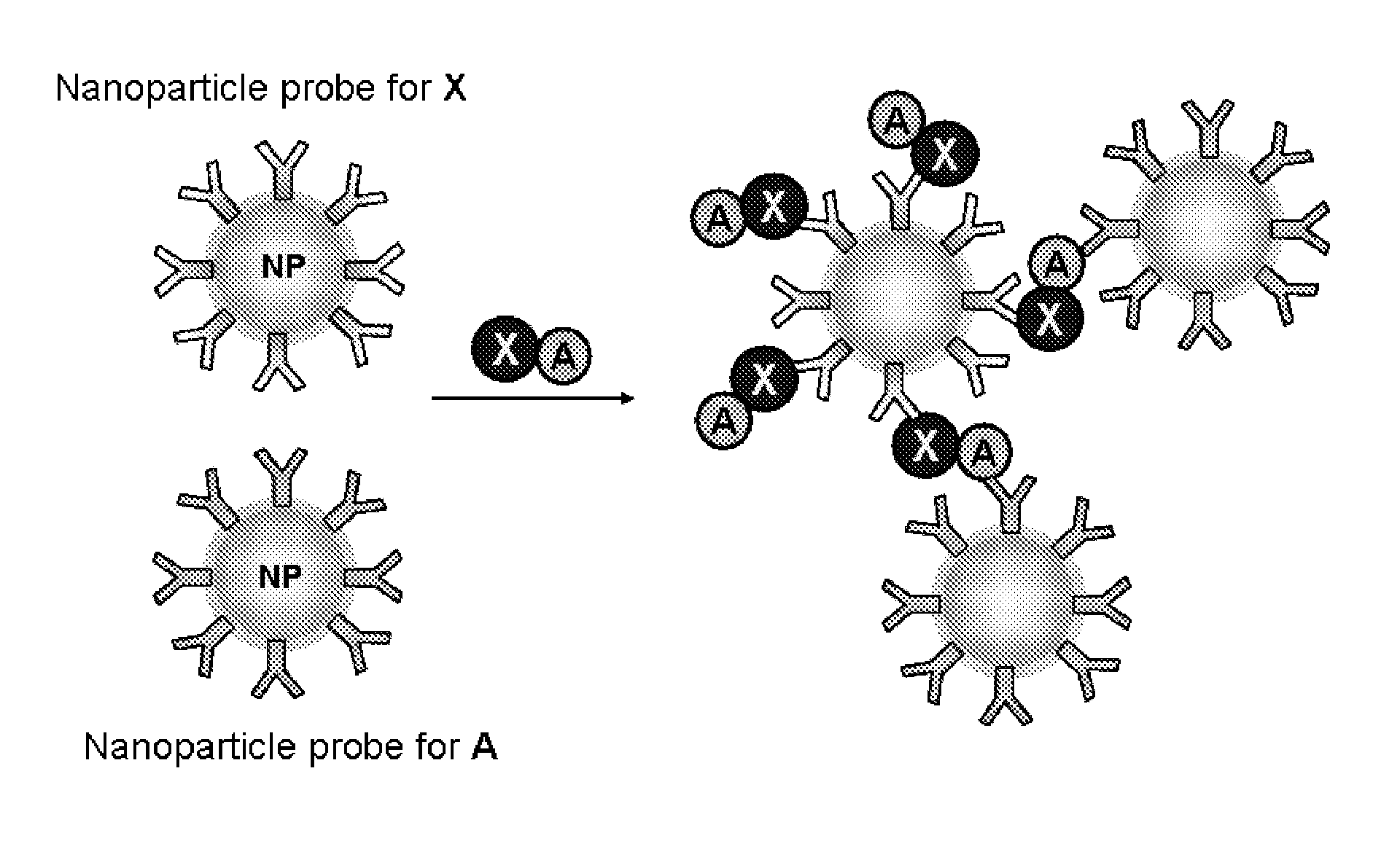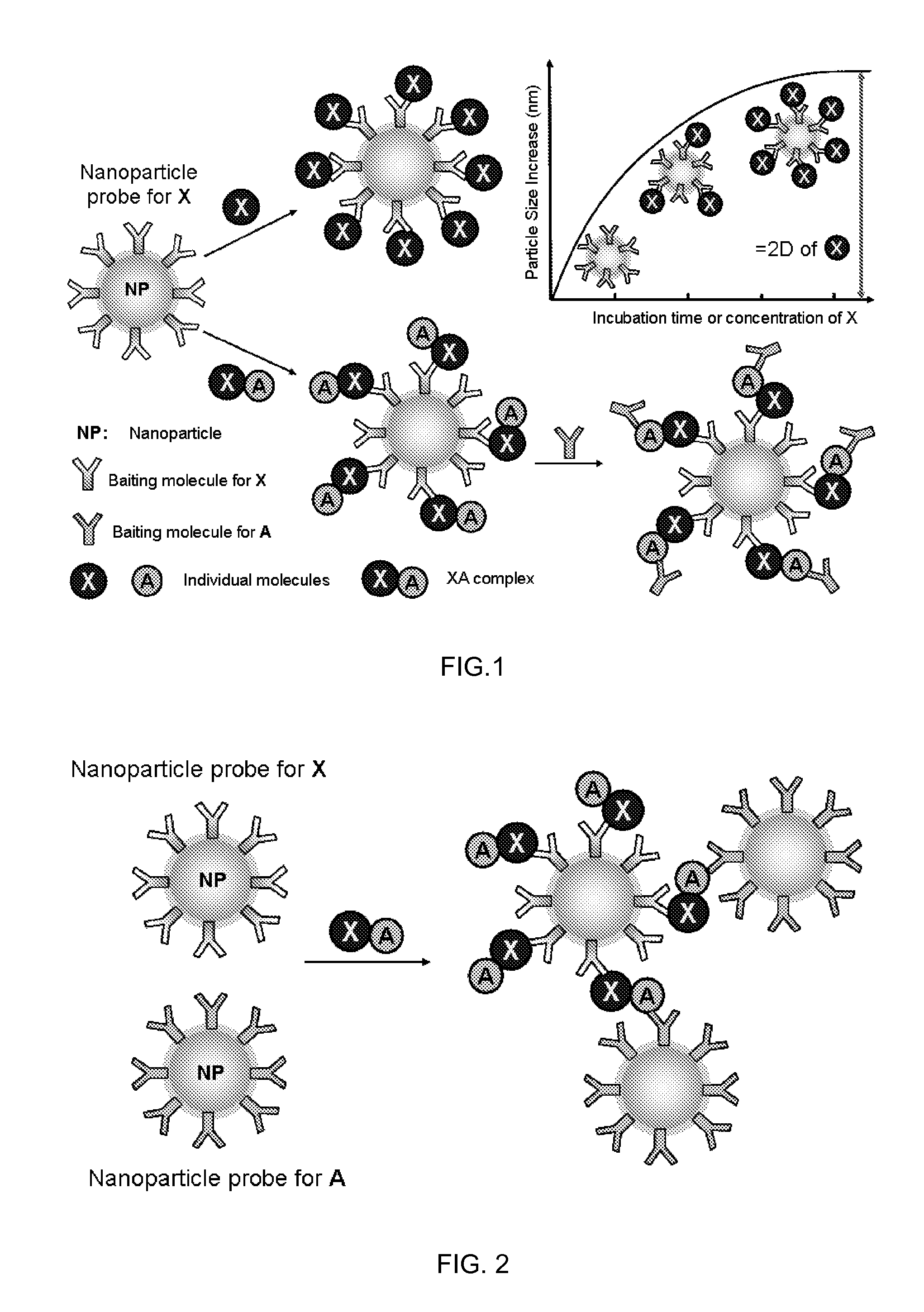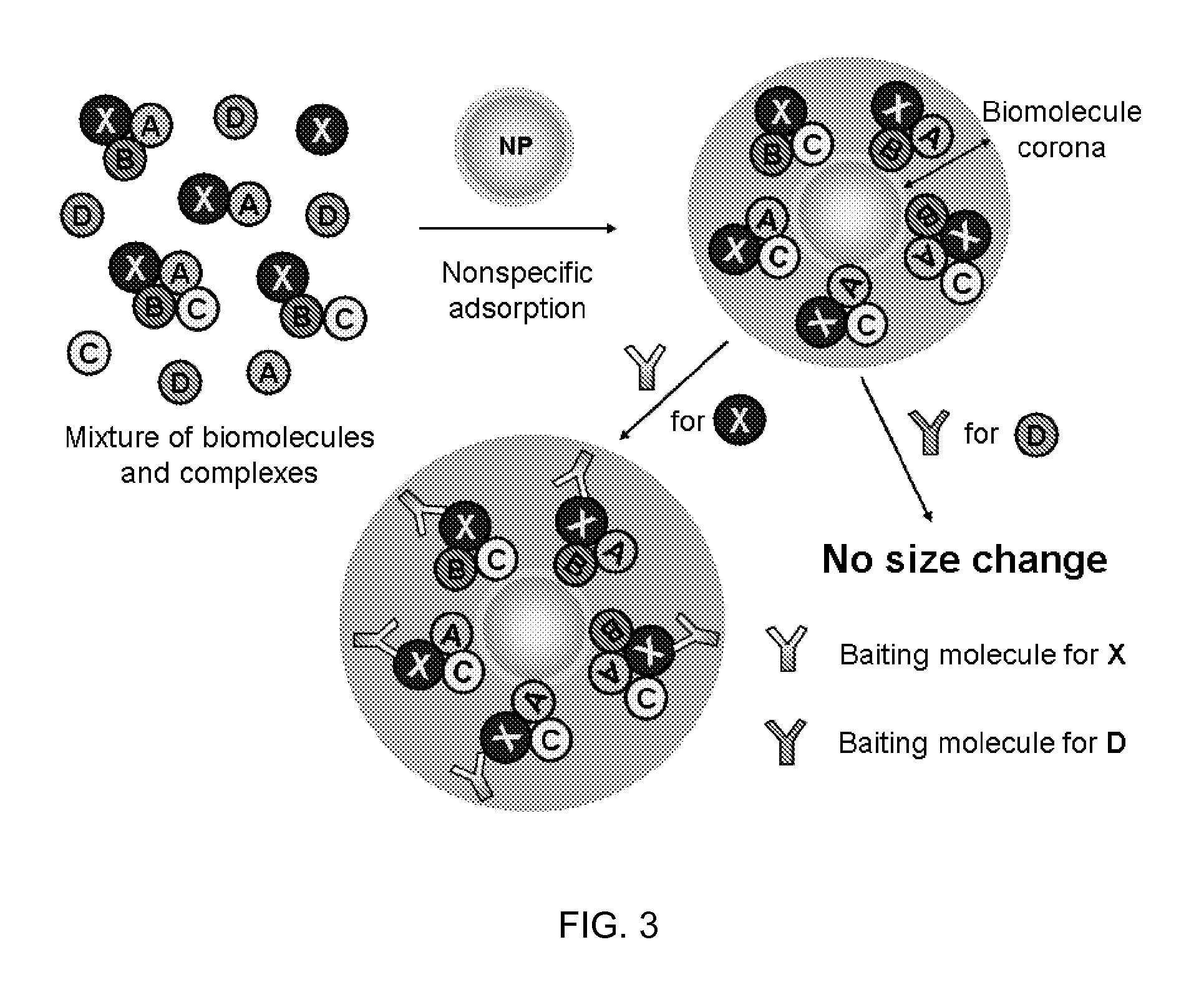Methods for Biomolecule and Biomolecule Complex (BMC) Detection and Analysis and the Use of Such for Research and Medical Diagnosis
a biomolecule complex and detection method technology, applied in the field of biomolecule and biomolecule complex detection and analysis, can solve the problems of not being able to provide kinetic binding information, unable to meet the demands and challenges of biomolecular research and medical diagnosis, and unable to disclose the identities of the binding partners
- Summary
- Abstract
- Description
- Claims
- Application Information
AI Technical Summary
Benefits of technology
Problems solved by technology
Method used
Image
Examples
examples
[0024]In the following, three examples are given for each of the embodiments as described above. Additionally, a fourth example is provided to describe how the biomolecular complexes discovered from our research can be used for diagnostic applications.
[0025]1. Detection of a Heterocomplex EGFR / Stat3 / Src From a Pancreatic Cancer Cell Line, Panc-1 Cells
[0026]Using the first embodiment (FIG. 1), we recently successfully studied the assembly of signaling molecules into complexes that promote signal transduction. In particular, the new invention permitted the detection of hitherto unknown heterocomplex formed from three proteins: epidermal growth factor receptor (EGFR), Stat3, and Src in the nuclei of a pancreatic cancer cell line, Panc-1. EGFR is an important regulator of cellular responses, including growth and survival. The attention from biomolecular researchers on EGFR protein has been enormous in part because there remains a significant gap in the understanding of the key molecular...
PUM
| Property | Measurement | Unit |
|---|---|---|
| diameter | aaaaa | aaaaa |
| diameter | aaaaa | aaaaa |
| size | aaaaa | aaaaa |
Abstract
Description
Claims
Application Information
 Login to View More
Login to View More - R&D
- Intellectual Property
- Life Sciences
- Materials
- Tech Scout
- Unparalleled Data Quality
- Higher Quality Content
- 60% Fewer Hallucinations
Browse by: Latest US Patents, China's latest patents, Technical Efficacy Thesaurus, Application Domain, Technology Topic, Popular Technical Reports.
© 2025 PatSnap. All rights reserved.Legal|Privacy policy|Modern Slavery Act Transparency Statement|Sitemap|About US| Contact US: help@patsnap.com



